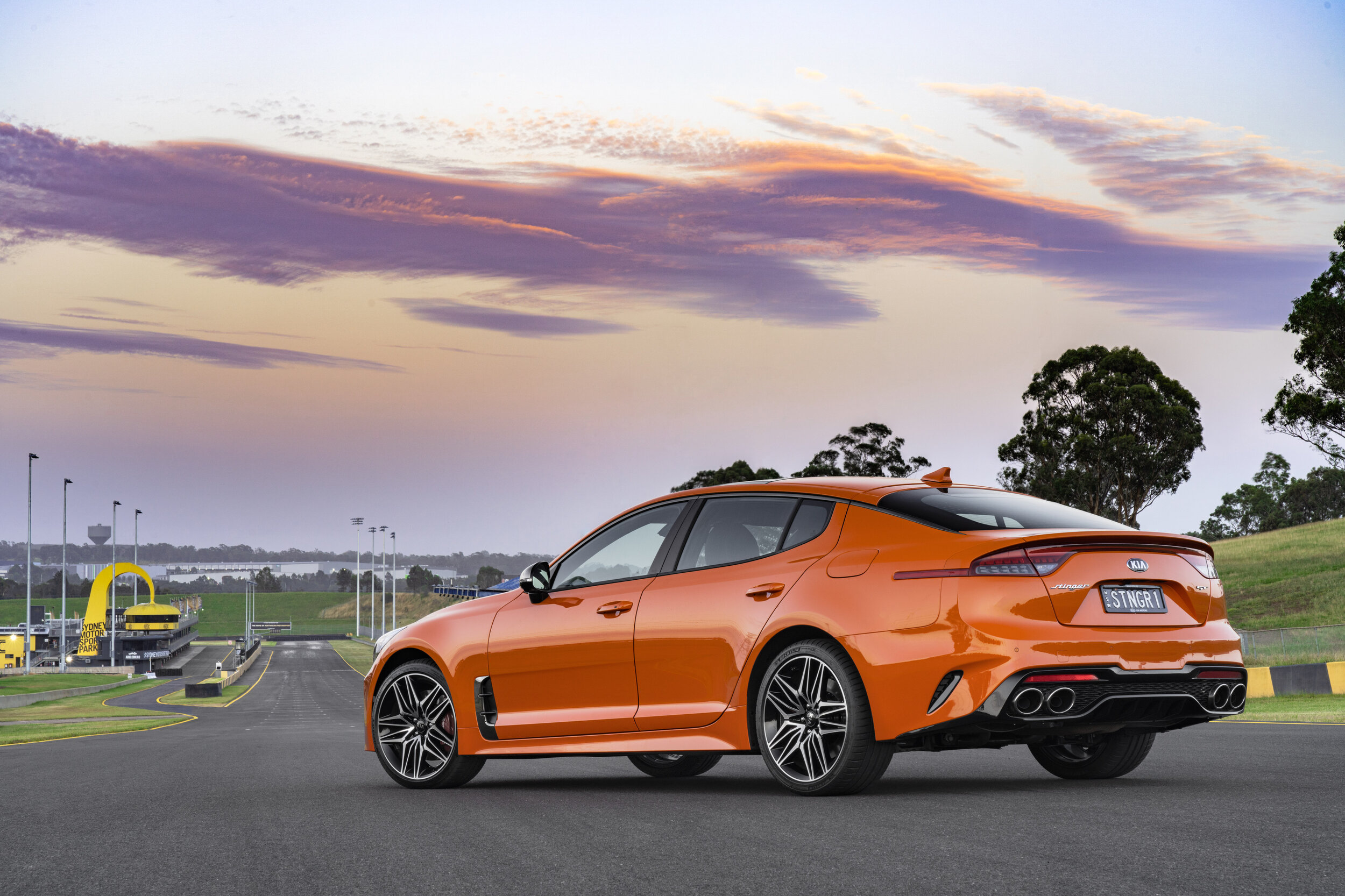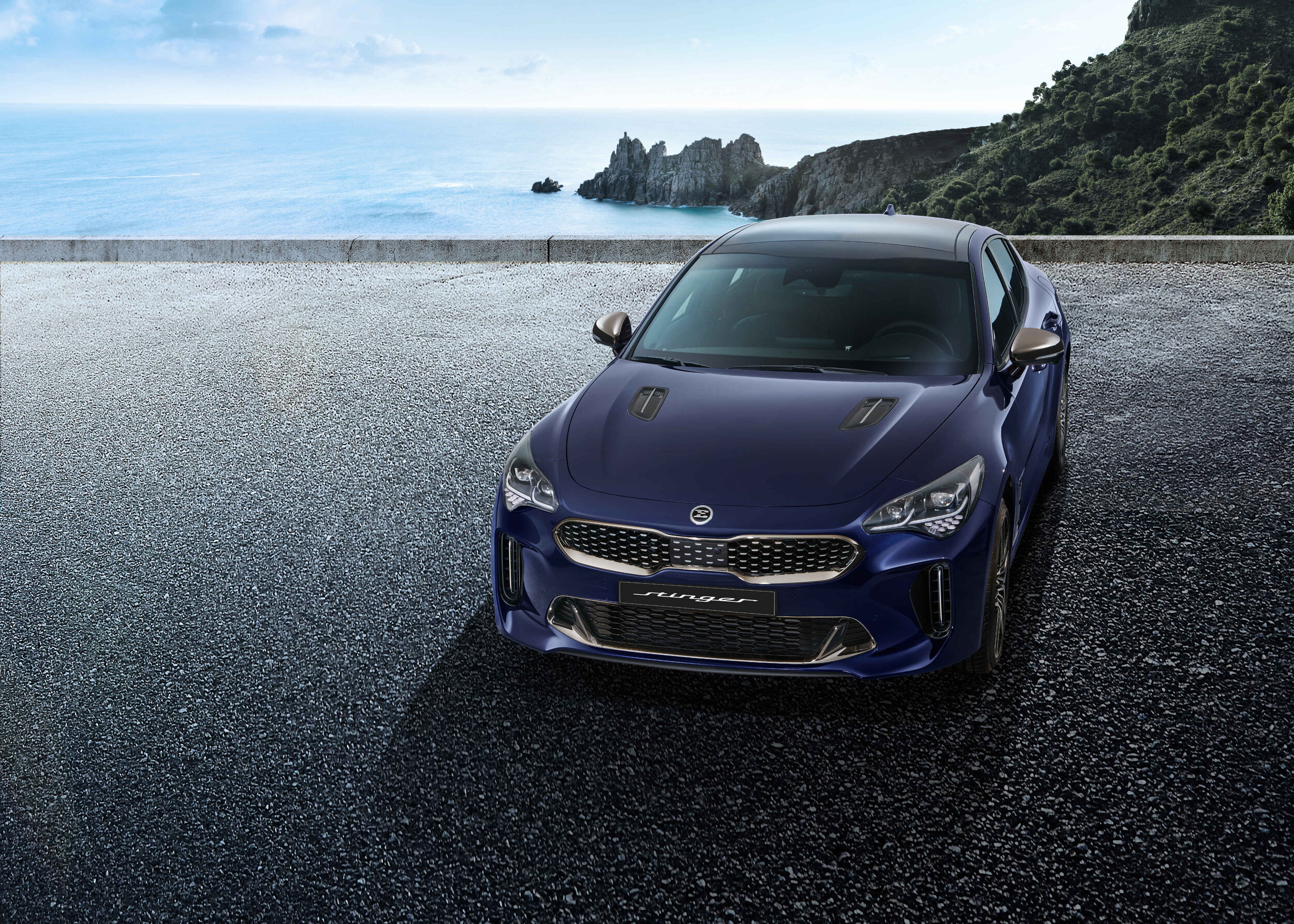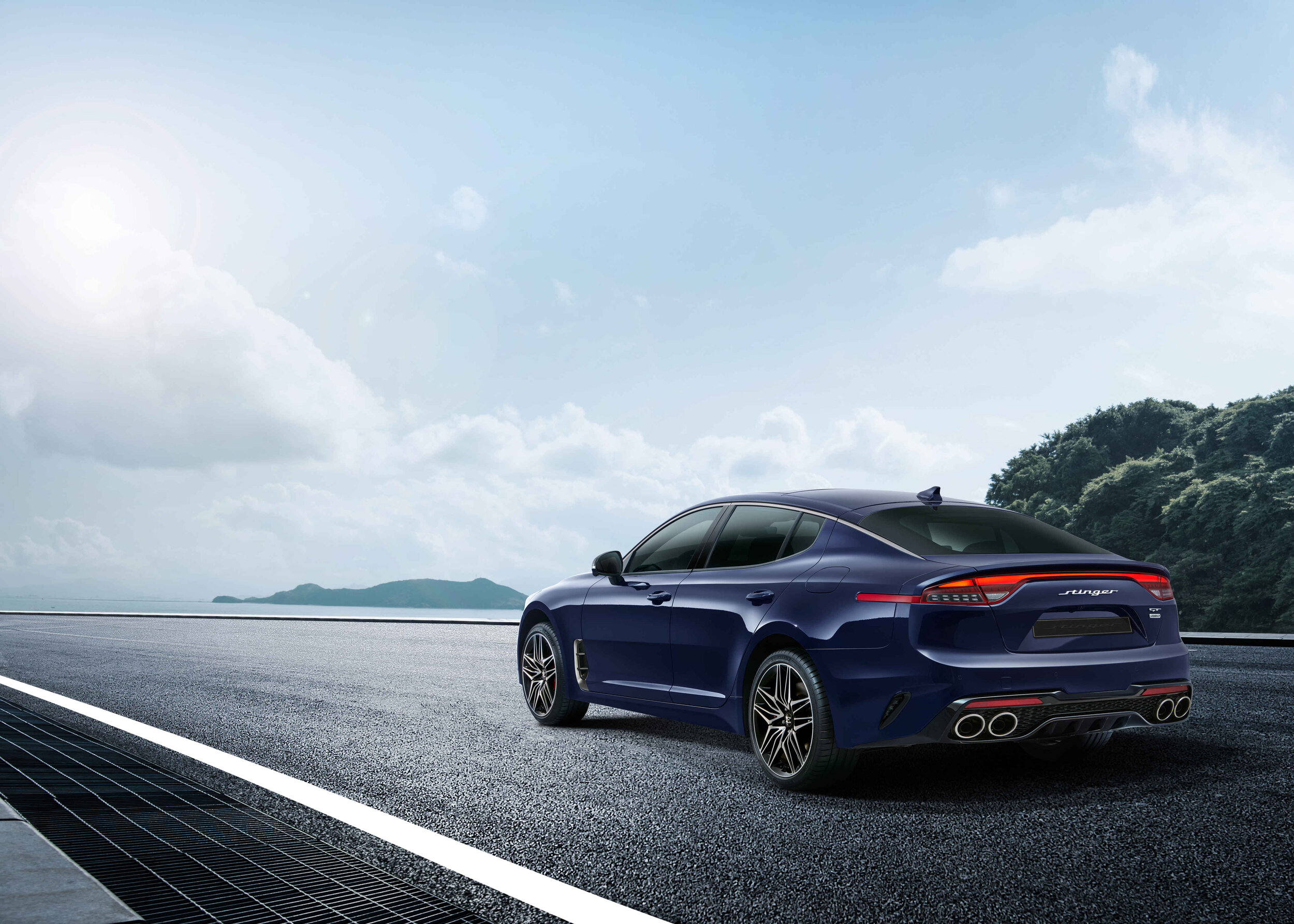End of the road for Stinger, diesel Sorento
/Plan S is a push toward sustainability – but it also means sacrifice in the local Kia line-up.
Read MorePlan S is a push toward sustainability – but it also means sacrifice in the local Kia line-up.
Read More
A SINGLE turbo four-cylinder GT Line and a fuller-blooded GT Sport with the headline twin-turbo V6 now comprise the choice of Stinger sedans offered by Kia NZ.
The range’s reduction from three models to just two, with a previous EX Turbo version being dropped, comes with an update that leaves the entry engine unaltered and the V6 achieving slightly more power – but no extra torque – and otherwise introduces some content updates, styling revisions and the sting of $5000 price increases for each.
The GT Line model, with the 182kW/353Nm 2.0-litre, now costs $64,990 while the GT Sport has become a $74,990 opportunity. The 3.3-litre engine now produces 274kW – 2kW more than previously – and continues to generate 510Nm.
Each engine marries to an eight-speed automatic.
The GT Sport achieves new standard bi-model exhaust and limited slip differential, a fresh wheel design and Nappa leather.

Both cars update to a 10.25-inch central touchscreen, featuring a refined interface and improved reverse camera.
Common to both are an eight-way adjustable electric driver’s seat, heated and cooled front seats, a sunroof, a 15-speaker Harman Kardon sound system, and mood lighting.
The safety suite enhances to include safe exit warning, semi-autonomous highway driving assist (a combo of radar cruise and lane-keep assist working in unison), cyclist detection, rear occupant alert, and blind-spot view monitor (beaming an image from the wing mirror onto the primary infotainment screen).


SUBLTE exterior styling tweaks, specification improvements but will there be an engine change?
Kia is still sparing its Stinger audience core detail about what changes, if any, have occurred under the bonnet in divulging a mid-live revision of the rear-drive sports fastback after three years on the road.
Information and images have been sent out from Seoul today, but there’s no word yet about specific local market plans for the car, whose availability to international markets is expected to begin from year-end.
Changes to the front end are limited to revised headlights, with completely redesigned internals and LED signatures and the rear’s LED signature now lights up across the width of the boot lid. Plus the indicators comprise a collection of 10 individual LED units each, arranged in a grid pattern to mimic the appearance of a chequered flag used in motorsport to signal the end of a race.
A slightly updated bumper design can also be seen at the rear, along with larger exhaust tips that will hopefully result in a more resonant exhaust note.

As for talk of it moving to Hyundai group's new and more powerful 279kW and 530Nm 3.5-litre twin turbo V6 in place of the current 272kW and 510Nm 3.3-litre turbo six?
Kia’s response to that conjecture is to feed the speculation machine all the more.
It simply says it will “reveal more details … including its new powertrain lineup and technologies” at a time closer to when it hits the road in South Korea. In respect that, it offers only that this will be a third quarter introduction.
The brand says changes to the extertior appearance are to amplify its gran turismo character and add a new touch of drama. The intent is also to give buyers more options for customisation.
Two new 18-inch and 19-inch aluminium alloy wheels are also introduced with intricate, geometric designs which enhance the sporty, grand tourer nature of the car.
Inside? While the basic cabin architecture remains unchanged, there are visual and material upgrades to create a more luxurious ambience.

The lower section of the steering wheel features a new metallic finish, matching the chrome bezel that now surrounds the 7.0-inch fully-digital instrument cluster. The latter is designed to provide crystal clear information to drivers via its high-definition display. The rear-view mirror is now frameless.
Depending on specification, the dashboard and doors are finished with new contrast stitching while the centre console is available with aluminium or carbon fibre-style trim.
Sitting atop the dash is Kia’s upgraded 10.25-inch touchscreen infotainment and navigation system, accented by a new glossy black finish along the front of the dash. The cabin also features a new mood lighting system, allowing drivers to select one of 64 colours to subtly alter the character of the cabin.
Interior trims also alter. For Kia’s global markets, new choices include Nappa leather upholstery finished in Saturn Black, Red or Beige, alongside existing leather and synthetic leather options. A new Saturn Black option finishes the seats in black suede with contrasting red stitching in a ‘chain’ pattern designed to mimic the links in a watch strap.
Exterior packages have also been announced. For high-performance variants in many markets worldwide, a new ‘Dark Package’ brings with it a gloss black diffuser surround and black wide-bore muffler tips. The Stinger emblem on the tailgate is also finished in black.
Sadly, only North America achieves a ‘Black Package’ that includes new 19-inch matte black lightweight wheels, a new rear wing for the boot lid, and blacked out mirror caps and side fender trim.
The bigger question aboiut Stinger is this: Will it last beyond this current generation?

There’s no doubt that, for all the halo effect it’s had on the Kia brand image, the car itself has done nothing much to support ‘build it and they will’ come thought in respect to their being a healthy market for reasonably priced rear-drive six-cylinder sports sedans. Frankly, that hasn’t happened: In many markets, where volumes have likely failed to hit prediction. NZ likely stands as the only place where it has achieved about expectation.
Kia’s concern about this has been long-standing. It obviously feels it has to stay the course with the current car and why not? The big investments have been made. The cost of building it are relatively minor by comparison to those that went into its creation.
However, don’t imagine they’ll simply laugh it off. At last year’s Frankfurt auto show, Gregory Guillaume, VP and head designer for Kia in Germany and one of the designers, acknowledged that global sales have not met expectations at the automaker, and that the North American market has proven to be particularly disappointing.
“We did want to be successful at least in America, the market where we thought there is a chance that it works.”
MotoringNZ reviews new cars and keeps readers up-to-date with the latest developments on the auto industry. All the major brands are represented. The site is owned and edited by New Zealand motoring journalist Richard Bosselman.